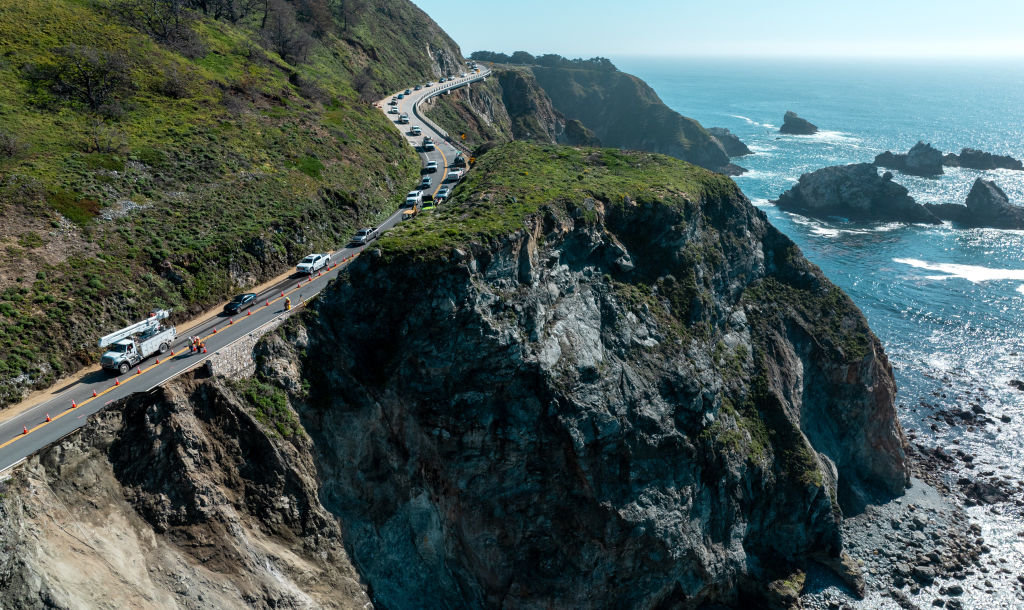Fascinating facts about our planet Earth
The Earth is flattened at the poles, so its shape is described as an oblate spheroid, rather than a circle.This is thanks to a force similar to the one that pulls you out of your seat on a rollercoaster, causing the earth to bulge at the equator.
Image: Unsplash/Greg Rakozy
If there were a tunnel linking the North and South Pole and someone jumped from one to the other, it would take 42 minutes to reach their destination.
Image: Unsplash/NASA
It is hard to believe that water covers 71% of the Earth. Oceans, seas, marshes, lakes and rivers cover nearly three quarters of the Earth's surface. However, it is the oceans that accumulate the most water, accounting for 97% of the total amount of water on the entire planet.
Image: Unsplash/Nikolay Maslov
Ninety-seven per cent of the water in the oceans is, of course, salt water. The remaining 3% is fresh. Now, only 1% is available for human consumption, as the other two parts are frozen.
Image: Unsplash/Margaret Polinder
Iron is the chemical element which is most present on Earth, with 32%, ahead of oxygen with 30%. This is followed by silicon, with 15%. How can this be? The scientific explanation is that the planet's core is almost entirely (around 88%) made of iron. In fact, Earth is the densest planet in the Solar System.
Image: Pexels/A
One fifth of the planet's oxygen is generated in the Amazon rainforest.
Image: Unsplash/Isaac Quesada
Going to the other extreme, it is estimated that one third of the Earth's land surface is deserted.
It has not been possible to certify that there is life on other planets. On Earth, however, there is enough to fill a few more. A study by Dalhousie University estimates that there are 8.7 million species on the planet. Of these, 86% have not yet been discovered.
As far as the human race is concerned, it is estimated that the 195 countries on the planet are home to more than 7.7 billion people.
Image: Unsplash/K. H.
The UN estimates that by 2050 the world's population will have increased by 2 billion people, reaching 9.7 billion.
Image: Unsplash/Kevin Rajaram
The UN warns that 150 species are becoming extinct every day across the planet.
Image: Unsplash/Ma Ti
It is estimated that there are more than one million marine species living in the oceans. So far, only a third of the total have been discovered.
Image: Unsplash/Dmitry Bukhantsov
It is easy to imagine why so many marine species remain undiscovered. Humans have only explored 5% of the ocean depths, the remaining 95% are unchartered.
Image: Unsplash/Jonathan Borba
If you take a piece of soil with a spoon and put it under a microscope, you will find more living organisms than there are people on the planet.
Image: Unsplash/Paul Mocan
The Earth is estimated to have been formed 5 billion years ago. Despite its age, life on the planet formed 'only' 200 million years ago.
Image: Pixabay/Joshua Woroniecki
The Earth is so diverse that its geographical properties vary enormously. For example, Death Valley in California, USA, is considered to be the hottest place on the planet. It was there that the highest temperature ever recorded was a sweltering 56.7°C on 10 July 1913. More than a century later, this record still stands.
Image: Unsplash/Julien Cavandoli
On the other extreme, there are areas where the thermometer drops to levels unable to sustain human life. On 31 July 1983, the Vostok station in the middle of Antarctica saw the temperature drop to -89.2 degrees Celsius, the lowest temperature ever recorded.
Image: Unsplash/Torsten Dederichs
The coasts of Australia have the largest single structure made up of living organisms on Earth: the Great Barrier Reef. It is a barrier that stretches for more than 2,300 kilometres and is home to tens of thousands of marine species.
Image: Unsplash/Manny Moreno
The Earth is the only planet in the entire Solar System with active tectonic plates. The movement of these plates is what triggers volcanoes, earthquakes and the creation of mountains.
Image: Unsplash/Jeremy Bishop
Every year, around 500,000 earthquakes are recorded. Fortunately, only one fifth of them can be felt. Of these, only 100 cause damage, although some have shown to be absolutely devastating.
Image: Unsplash/José Antonio Vázquez Gallego
Every day between 10 and 20 volcanoes erupt somewhere on the planet.
Image: Unsplash/Toby Elliot
The planet takes 365.2564 days to go around the sun. That is one year and a little more. To compensate for this, every four years, one day is added to the calendar. So, every four years, there is a leap year. The next one will be in 2024.
Image: Unsplash/Nick Hillier
This time lag is caused by the fact that the planet does not take 24 hours to go around its axis, but 23 hours, 56 minutes and 4 seconds. Adding up the nearly 4 minutes to get there, it adds up to one day every four years.
Image: Unsplash/Hennie Stander
The rotation speed of the earth is getting slower and slower, decreasing by 17 milliseconds every 100 years. Thus, it is estimated that in 140 million years, days will be 25 hours long. We have all been longing for that extra hour to do the things we never have time for - but, of course, we still won't have the time.
Image: Unsplash/Jason Corey
Although humans cannot feel it, the Earth moves at a speed of 1,600 kilometres per hour. Taking into account that the distance to the sun is 150 million kilometres, it takes 8 minutes and 19 seconds for sunlight to reach the Earth.
Image: Unsplash/NASA
The speed at which the Earth revolves around the Sun is 107,826 kilometres per hour. That surely gets the head spinning.
Image: Unsplash/Toby Osborn
The Great Wall of China stretches 21,200 km long. It is the largest construction on Earth and it has always been claimed that it is the only human construction element that can be seen from space. This claim is false. Despite its imposing size, at 100 km high, the Great Wall of China cannot be seen. However, some experts claim that the great cloud of pollution over Beijing, the capital of the Asian country, can be seen.
Image: Unsplash/Kaja Reichardt
Despite the presence of humans all over the planet, the reality is that ants are the species that has managed to colonise the entire planet. With the exception of Antarctica and some remote and inaccessible islands, ants can be found everywhere.
Image: Unsplash/John Lozano
The world's cities occupy only 2% of the total land area of the planet. Despite this, they are responsible for 70% of the greenhouse gas emissions released into the atmosphere.
Image: Unsplash/Timothy Eberly
Planet Earth is the brightest planet in the solar system, as seen from other planets. This is because sunlight reflects off the water in the oceans.
Image: Unsplash/Sebastien Gabriel
Speaking of light, you should know that rainbows are circular, but humans perceive them in the shape of a semi-circle because the horizon covers the lower area.
Image: Unsplash/Stainless Images
The lowest point on the planet is almost 11 km below sea level. It is a section of the Mariana Trench known as the Challenger Deep. The water pressure is more than 1,000 times greater than that on the surface, making it almost impossible to explore.
Image: Unsplash/Jeremy Bishop
If the history of the planet were condensed into 24 hours: life would have appeared at 04:00 hours; land plants at 22:24 hours; dinosaurs would have become extinct at 23:41 hours; and humans would have begun their journey on the planet at almost 23:59 hours.
Image: Unsplash/Pierre Bamin
Between 1990 and 2020, a span of 30 years, human activity has caused the world to lose 178 million hectares of forest. To put this into context, this is an area similar in size to that of Libya.
Image: Unsplash/Marek Novotny
Around 90% of the waste in the oceans is plastic. It is estimated that 13 million tonnes of plastic are dumped into the world's oceans every year.
Image: Unsplash/Cristian Palmer
More for you
Top Stories
















































